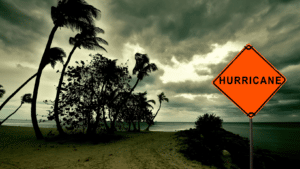
The practice of naming hurricanes can be traced back to the early days of meteorology. In the past, hurricanes were often referred to by the date on which they occurred or by the location where they made landfall. However, this method of naming was often confusing and difficult to track, especially as the number of storms increased.
In the 1940s, the United States began using the phonetic alphabet to name storms. This system was used for several years, but was eventually abandoned in favor of using women’s names. In 1953, the United States Weather Bureau (now the National Weather Service) began using women’s names to name hurricanes, a practice that continues to this day.
The process of naming hurricanes is now coordinated by the World Meteorological Organization (WMO), which is responsible for assigning names to tropical storms and hurricanes around the world. The WMO maintains a list of names for each Atlantic hurricane season, which runs from June 1 to November 30. The names are chosen from a pre-determined list and are assigned to storms in alphabetical order.
The names used for hurricanes are not chosen at random. They are carefully selected by the WMO, with input from other organizations such as the National Hurricane Center and the National Weather Service. Names are chosen based on several criteria, including cultural significance, historical significance, and ease of pronunciation. Names are chosen to be memorable and easily recognizable, in order to help people better understand and track the storms.
It’s worth noting that the practice of using only women’s names for hurricanes has been criticized for being sexist. In 1978, men’s names were added to the list of hurricane names. Since then both men and women’s names are used alternately.
Once a storm reaches tropical storm strength, it is given a name. If a storm becomes a hurricane, the name assigned to it is not changed. If a storm is particularly destructive or deadly, the WMO may retire the name and it will not be used again in future seasons.
In addition to the names assigned by the WMO, hurricanes are also given additional designations based on their intensity. These designations range from tropical depression to Category 5 hurricane, with Category 5 being the most severe. The Saffir-Simpson Hurricane Wind Scale is used to assign these designations, based on the maximum sustained wind speed of the storm.
In conclusion, the practice of giving hurricanes specific names is an important aspect of tracking and studying these powerful storms. The names assigned to hurricanes are chosen based on several criteria, including cultural significance, historical significance, and ease of pronunciation. The World Meteorological Organization is responsible for assigning names to hurricanes around the world, and the names are chosen from a pre-determined list in alphabetical order. The names are used to help people better understand and track the storms, and they are an important tool for meteorologists and scientists studying these powerful natural phenomena.

